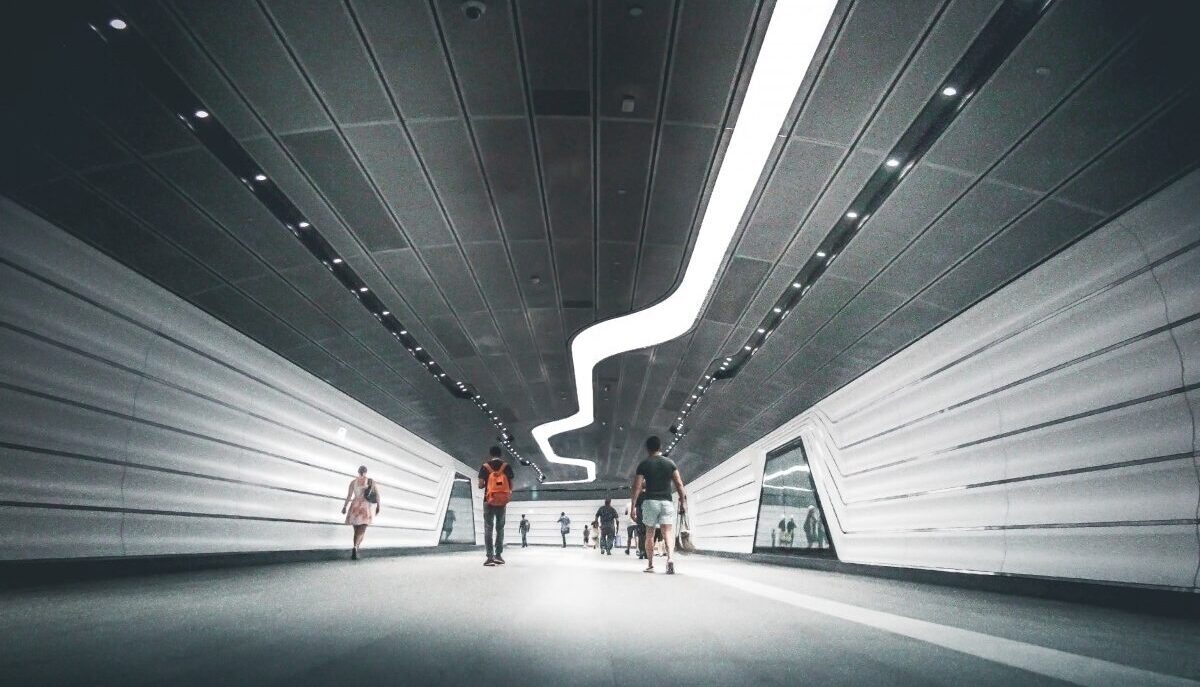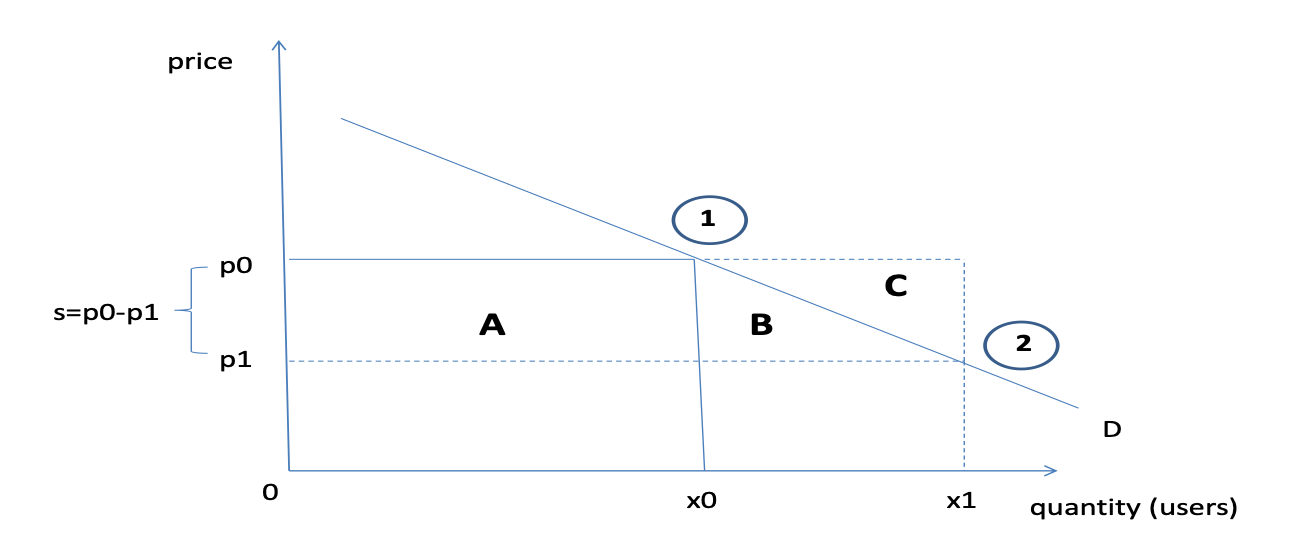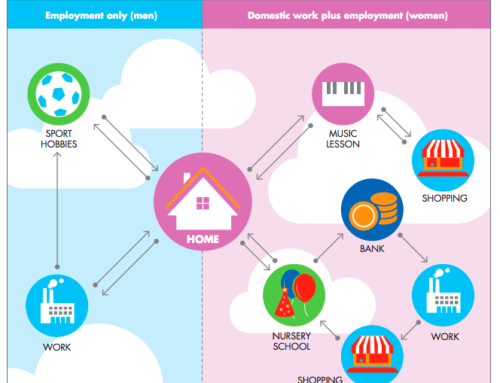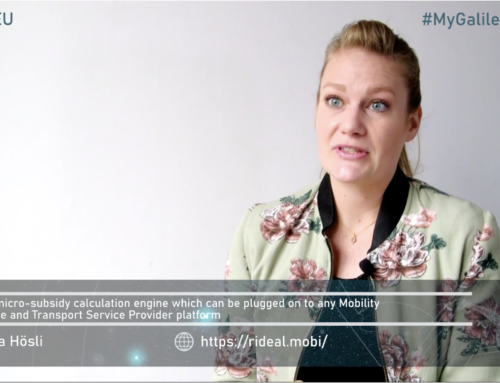The beauty of “Micro-Subsidies”: a new era in the management of urban mobility?

Introduction
The COVID-19 crisis can have a paradoxical effect on public transport (PT). The limitations imposed on mobility during lockdowns and increasing concerns about the need to keep some physical distancing thereafter have reduced ridership to historical lows and this has had a tremendous impact on PT’s finances (see here). But that same reduction in traffic, which has translated into cleaner skies, less CO2 emissions, fewer crashes and less noise, have reinforced the case –among public authorities and public opinion alike- for a much more sustainable mobility in our cities and hence for PT. So, and here is the paradox, today’s weaknesses of PT can be the basis of its future strength, as it emerges as one of the winners of the pandemic and consolidates itself as the backbone of the mobility system in urban areas, especially in Europe. The actual materialization of this paradox will require, however, important changes in the way PT is managed. These changes will affect the whole operations of PT, but an overhaul in its financing will be probably the unlocking factor. In particular, the design and management of public subsidies to PT will need to undergo substantial changes pressed by the growing budgetary constraints derived from the COVID-19 crisis. And, in fact, as we will argue later on in this note, increased efficiency in the way subsidies are distributed can open the door not just to increased savings for public authorities, but, more importantly, to a much more equitable and efficient mobility in European cities. Thus, the much needed –unavoidable?- change in the subsidies policy of PT is bound to have a huge impact on the whole of urban mobility.
In the two sections below, we make the case for the opportunities that exist to improve mobility through more tailored, better managed subsidies policies. In the first section, we explain how the subsidies policies of PT work at present and what are its main shortcomings. In the second, we introduce the concept of “micro-subsidies”, conceptually a whole new way to design and implement subsidies, and we explain its potential implications, both for mobility and for the management of subsidies. We end with some conclusions.
1/ Subsidising PT: how it works and main shortcomings
1.1/ The starting point: subsidies in PT are a ubiquitous reality
Subsidies are inherent to PT; in fact they are its defining feature. PT is composed of those mobility services that receive resources from a Public Transport Administration (PTA) so as to lower the price that users have to pay for them. These services, often offered through mass transit or collective modes of transport, are provided most often by public operators, but in some cases they are provided by private companies, usually under some kind of concession scheme.
Subsidies in PT are today a ubiquitous reality: they are everywhere and in large amounts. Some examples: in Barcelona, subsidies account for 50% of the cost of providing services of TMB (the main local operator of PT, basically metro and bus services) and this amounts to approximately 500M Euro per year out of the 1000M operational expenses budget of TMB. This proportion applies probably to PT in most large European cities, and it is probably larger in suburban areas. In the US, subsidies can amount to between 30 and 90% (see here). In LMICs -Low- and Middle-Income Countries- this figure is probably lower, but still significant.
Subsidies in PT are justified on two grounds:
- first, there is an equity consideration: inasmuch transport is a derived demand for some fundamental goods/rights, like education, health or work, it is important to guarantee access to these rights to the whole of the population, irrespective of their capacity to pay;
- second, there are is an argument linked to the achievement of some social goals (in economics these are often referred as efficiency goals. In this article we refer indistinctly to social or efficiency goals). Subsidies are considered to be necessary to incentivise the use of mass transit instead of the private vehicle which is known to generate important negative externalities (in the form of pollutant emissions, of crashes, and of congestion). So, subsidizing PT is a way to level the playing field with the private car. Of course, this could be achieved by taxing the car even more heavily, but this is politically costlier….
Also, the existence of economies of scale in the provision of mass transit services could justify subsidies (this is the so called Mohring effect). With decreasing average costs it is socially optimal to subsidize PT and have a PTA cover the deficit of PT operators. Some authors argue, however, that considering the cost of raising taxes, it is better to aim at a second bestsolution, with a lesser amount of PT services, but in principle no need of subsidies (see here).
1.2/ Types of subsidies
In practice, we can distinguish two types of subsidies: uniform subsidies and targeted subsidies.
Uniform subsidies are block subsidies that are given directly to a (most often, public) transport operator to cover operating costs (there are also subsidies to infrastructure, but they are not relevant for our discussion here). Uniform subsidies benefit equally all users.
Targeted subsidies are designed to benefit specific groups of users. Typically, they can be:
- Categorical: they benefit a category of users, like students (or, more generally, youngsters) or pensioners. Generally these subsidies aim at targeting groups that are assumed to have a low level of income (in practice, this is difficult, as for example, within the group of pensioners there can be many high income/wealth individuals and within the group of students there can be many youngsters that belong to high income families. Means testing is one of the key challenges of targeted subsidies).
- Geographical: they benefit users living in certain areas or more precisely using PT in certain areas. Typically, rides in suburban areas are more highly subsidized than inner urban ones.
In both cases, the objective is to lower the price that users pay (the beneficiary of the subsidy need not be the agent formally receiving it. Ultimately, the subsidy will benefit users or operators depending on the elasticity of the respective demand and supply curves). Quantitatively, uniform subsidies are much larger than targeted subsidies. Even though the goal is that the user be the agent benefitting from the subsidy, formally it is the operator who receives the compensation from the PTA. Often in the case of targeted subsidies, as it is not possible to have precise information on the actual number and location of the rides that the beneficiary groups take, the compensation that the operator receives is a lump sum; and often, this lump sum is constant or changes seldom in time.
1.3/ The shortcomings of subsidies
In practice, subsidies result in much lower prices for users than what they would pay if they had to cover all the operating costs of transport operators. This is especially so for those groups that, in addition to the uniform subsidies, benefit from targeted subsidies. In this sense, it is possible to claim that subsidies contribute to broadly achieve the equity and efficiency goals that they pursue and for which they are designed.
But, these goals are probably achieved at a very high cost or, in any case, at a much higher cost than necessary. By definition, uniform subsidies are not well suited to achieve equity or efficiency goals because they are not able to discriminate, i.e. to benefit exclusively those users that want to be targeted. Targeted subsidies are better suited to achieve equity goals, as long as the categories they cover are indeed at the bottom of the income scale. Ultimately, it is all an empirical issue and the available evidence shows that in many countries subsidies to public transport are not effective as a redistribution policy (see here).
The graph below illustrates these shortcomings of uniform and of targeted subsidies.
We start at point 1 (x0, p0). With a uniform subsidy s we move to point 2 (x1,p1). All users pay now a lower price p1 and the PTA disburses a total subsidy of A+B+C. The subsidy serves to give new users (x1-x0) access to PT, but users x0–0 benefit now unnecessarily from the subsidy, because they had already access to PT without it. Uniform subsidies are effective, but not efficient.

Suppose, alternatively that authorities decide to subsidize only population x0-x1 (assuming that they can identify and target it) with a targeted subsidy s. In this case, the targeted population would pay p1 and the rest of the population would keep paying p0. The amount of subsidies given away by the PTA would be B+C. So, targeted subsidies are much more efficient than uniform subsidies… but still not fully as we will see below.
It is important to note, finally, that there is evidence showing that in practice the PT operators often capture part of the subsidy. This translates into higher costs of the operator, either through low load factors (occupancy rate), higher frequency than necessary, etc. Many of these inefficiencies arise from the fact that subsidies are often not directly linked to the actual use of the service, i.e. the demand risk is borne by the PA and this allows the operator not to be fully efficient.
2/ The beauty of “Micro-Subsidies”: a whole new way to design and implement subsidies
2.1/ A definition of “Micro-Subsidy”
In face of the limitations imposed by traditional subsidies, Micro-Subsidies (MS) offer a totally new approach in the design and management of subsidies and in the impact they can have on mobility. We define MS as:
Targeted subsidies down to the level of very narrowly defined categories or even individual users that can be modulated according to categorical/personal characteristics (age, income, disability, socio-economical groups –like unemployed-, etc) and any relevant feature of the journey (like time, geolocation, mode of transport, type of motorization of the vehicle, occupancy, etc).
With MS the PTA has the capacity to decide how to best combine these criteria in order to ensure that everyone has access to transportation and to achieve other social goals such as reducing emissions, reducing congestion or improving road safety.
MS are linked to the category/individual and their specific journey, and therefore need not be exclusively linked to them using a certain mode of transport operated by a public operator or a concessionaire as is the case with current subsidies. Surely, with MS a large bulk of subsidies will go to mass transit operators, but MS open the door to subsidizing journeys made in other modes, even if they are privately operated, if this is deemed desirable because of equity or efficiency considerations. In the limit, and just to illustrate this point graphically, MS could subsidize people to walk or bike instead of using certain motorized modes of transport if this were justified from an environmental point of view, for example.
2.2/ Advantages of MS
The advantages of MS relative to traditional subsidies can be grouped into two main headings:
A/ MS can achieve the same goals as traditional subsidies, but at a lower cost for PAs
Let’s go back to the graph above. We showed that with targeted subsidies authorities could achieve the same results as with uniform subsidies, but at a much lower cost. Instead of A+B+C, they would disburse just B+C. With MS, they could target demand at an individual level, so, in the case shown in the graph the users between x0 and x1 would each be charged a different price, namely the one corresponding to the demand curve. PTAs would complement this with a subsidy (different for each user) to cover the operational costs of the service provider, so that they would only need to disburse C. So, MS could eventually achieve full efficiency from the point of view of the PTA.
B/ MS open the door to a whole new approach in subsidies policies
Because of their granularity, in time and space, and because they are linked to the individual user’s circumstances, MS make it possible to achieve very precise efficiency goals (i.e. social goals), linked to reduced environmental impact (both as regards climate change and air quality), reduced congestion or improved safety.
Let’s see these possibilities in further detail:
1/ Because they can be modulated according to the time of the day, the day of the week or the month, they allow designing subsidies so as to flatten the demand curve of PT. This is very important, as it can lead to strong efficiency gains within PT, as well as to reduce the overall level of congestion. In times of COVID-19 and thereafter, flattening the demand curve can also be very interesting from a safety point of view as a means to ensure physical distancing.
2/ Because MS enable having real time information on the use of PT (see point 2.3 below), this can facilitate the management of PT, allowing for much closer adjustments between demand and supply even at the level of single routes covered by PT. This should probably be linked to having the PT operator be the one who bears the risk of demand (i.e. bear the costs of eventual changes in demand).
3/ Because MS are linked to individual users and their journeys, this opens the door to eventually subsidising certain journeys and certain modes of transport not linked to mass transit or PT operators. For example, in order to further reduce the use of the private car, it may be worth subsidizing certain first/last mile trips in micromobility modes to feed mass transit; or subsidising certain ride hailing services with the same purpose. This can increase public transport usage and generate additional revenues for PTOs.
4/ Linked to the point above, it could be possible to make the amount of those subsidies dependent on the type of vehicle used (e.g. electric or internal combustion engine), on the number of people sharing the vehicle, on the time of the day/day of the week when the journey takes place, etc. And, of course, these criteria could be considered individually or in a combined way.
2.3/ Managing MS
MS are to be managed through an app allowing for individualized (yet fully anonymized) tracking and geo-localisation. Each individual would keep an account with the PTA where the price per ride would be charged and where also information on the subsidies received would be provided. The user could also get info on how to minimise expenses taking advantage of the subsidies offered.
In this way, the management of MS would benefit from:
• Full control of eligibility criteria
• Quick reversibility (if certain measure do not work properly)
- Lower administrative costs
Conclusions
MS have a huge potential to improve the efficiency of subsidies to urban transport, optimising the amount of resources disbursed by PTAs, improving the operations of PT operators, and broadening very significantly the scope of journeys eligible to be subsidised. Ultimately this should result in increased equity and in a significant reduction of the negative externalities of road mobility: environmental impact, congestion, and road crashes. Inasmuch as they can help flatten the demand curve in mass transit, they can facilitate physical distancing, thus improving safety in collective modes also. All in all, this can have very profound effects in urban mobility, mostly to the benefit of the user and of PTAs.
The effective implementation of MS depends not so much on technological developments but rather on political will. Inertia is known to be a relevant driver in the behaviour of PTAs, so the challenge is to make them understand the potential benefits of MS, for users and for PTAs alike. Probably, the pressure that the COVID-19 crisis is putting on the finances of many PTAs can end up acting as very powerful ally in this respect.



